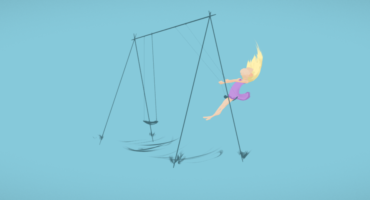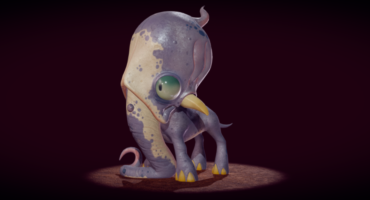Hello! My name is Fereshte Poorkazem (Ferre is my nickname). I’m a game artist and freelancer currently living in Tehran, Iran. I started my career as a 2D artist in indie game companies in my country about 5 years ago and then later decided to make a game of my own.
As a child I always liked to paint the rooms of a house and fill them with furniture and it was like a game for me. A few months ago I saw an isometric 3D model of a room and this was the biggest inspiration for me to start to learn 3D modeling. I chose Blender because it’s free and also there are lots of beneficial add-ons available for it. After watching a few tutorials and getting to learn the software I decided to start a project for myself to see how much I have learnt from what I’ve seen in those tutorials. I was watching the Seinfeld series at the time and I always wanted to pause the video and look more carefully at all those details used in the decoration. That’s why I chose Jerry Seinfeld’s kitchen as my first project to start 3D modeling and it was a good choice because it’s made of simple forms and geometries and colorful textures that can be presented in a low poly model.
Jerry Seinfeld’s Kitchen
First of all, I picked lots of references from different angles of the kitchen to be able to dig into every little detail.
Using Blender I started to put some primitive cubes as walls, countertop, refrigerator, etc. just to get to the right dimension and proportion in comparison to my reference because after the details are added it would be overwhelming to fix and change everything from the beginning. When I made sure that everything’s in its right place I started to add details to make them look like real objects.
When the whole room and main furniture were done, it was time to add the small objects and make it like a room where someone actually lives.
Once my model was done I started to optimize and remove some polygons that I don’t need and can not be seen. For example, I could have used fewer vertices for the pots or bowls, or used a texture for the tiles instead of actual cubes, but as long as this scene isn’t supposed to be part of a game assets and there’s no limitation I guess it’s fine. I like to be neat and tidy anyway.
I had to keep the objects simple because it was my first time practicing UV unwrapping without the help of tutorials and I didn’t want it to be a complicated process. For example this oven mitt is simply a cylinder with a few loop cuts and face extrusion.
Once I was happy with the entire model, I unwrapped everything to make them ready for texturing. In this step I used Photoshop for painting the textures. This is my favorite part because this is where you see that your model gets more colorful and fun and gets closer to what you wanted step-by-step.
After all the textures were done I started to assign materials to the objects using node editor in Blender Cycles.
At the end I decided to add a little story to the scene. I put the Chinese leftovers on the countertop to remind you that maybe Jerry’s friends have been there and I also added some dirt stains around the trash bin on the wall and the refrigerator to make you think of how Kramer always used to mess up the apartment and just left.
Sketchfab Setup
At the time I modeled the kitchen I didn’t know about Sketchfab! Later on Twitter I found out about a 3D modeling contest in which you had to export your final entry to Sketchfab. That was when I got to know that this amazing world of 3D models exists! So I got back to my Jerry Seinfeld’s kitchen to export it to the website.
I used PBR configuration with metalness/glossiness workflow because there are so many objects in the scene and I want each and any of them to have their own material.
Although I had used an orthographic camera in Blender, in Sketchfab I set the field of view to 20° to give the model a better and more realistic feeling when you are spinning it.
For post processing I turned on SSAO; it works like an AO map and I like the depth that it gives to the model and fixes everything next to each other.
And here is the final model:
https://skfb.ly/6BRuW
This was my first 3D scene I’ve ever created and I enjoyed it more than I expected. I learned lots of things on the way. Since then I practice modeling everyday and try to learn something new. I guess my 2D background has sped up my improvement
in 3D.
I want to thank Septagh for giving me inspiration and helping me with my technical problems.
Lastly I want to thank Sketchfab for giving me this opportunity to be reachable and accessible by others as much as I get to find so many new artists in this community every day.
Thank you for reading. You can see more of my work on:
Twitter / Artstation / Instagram










